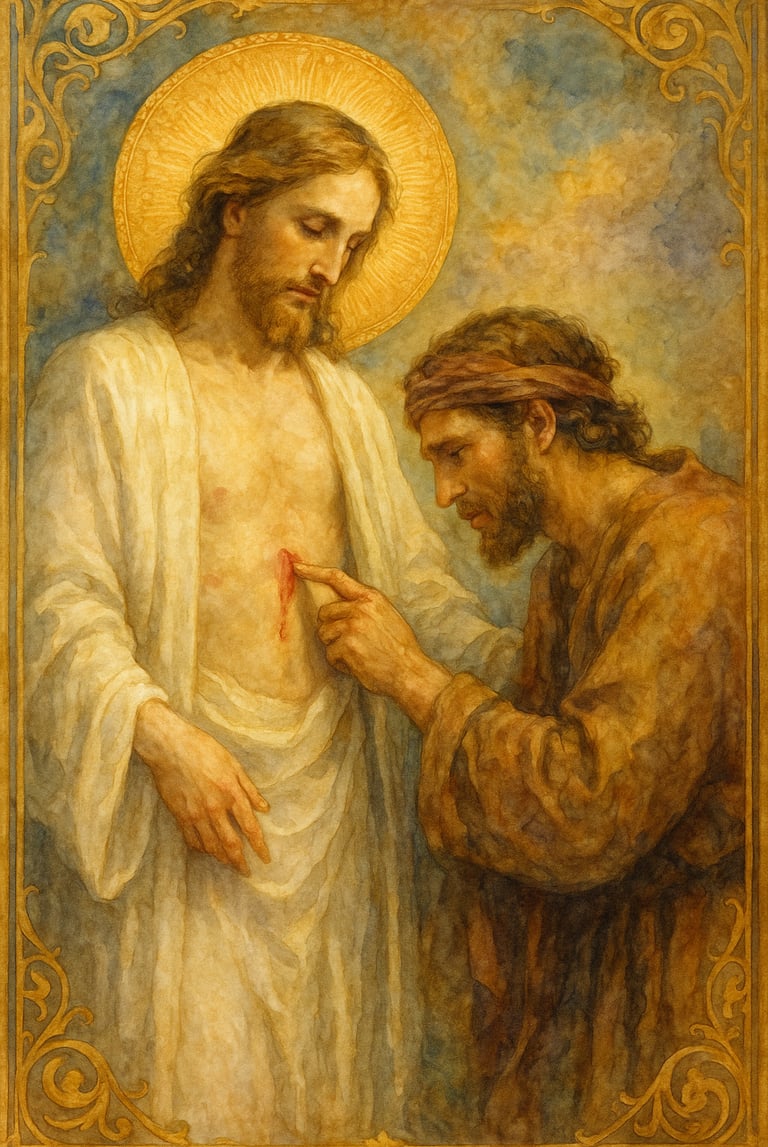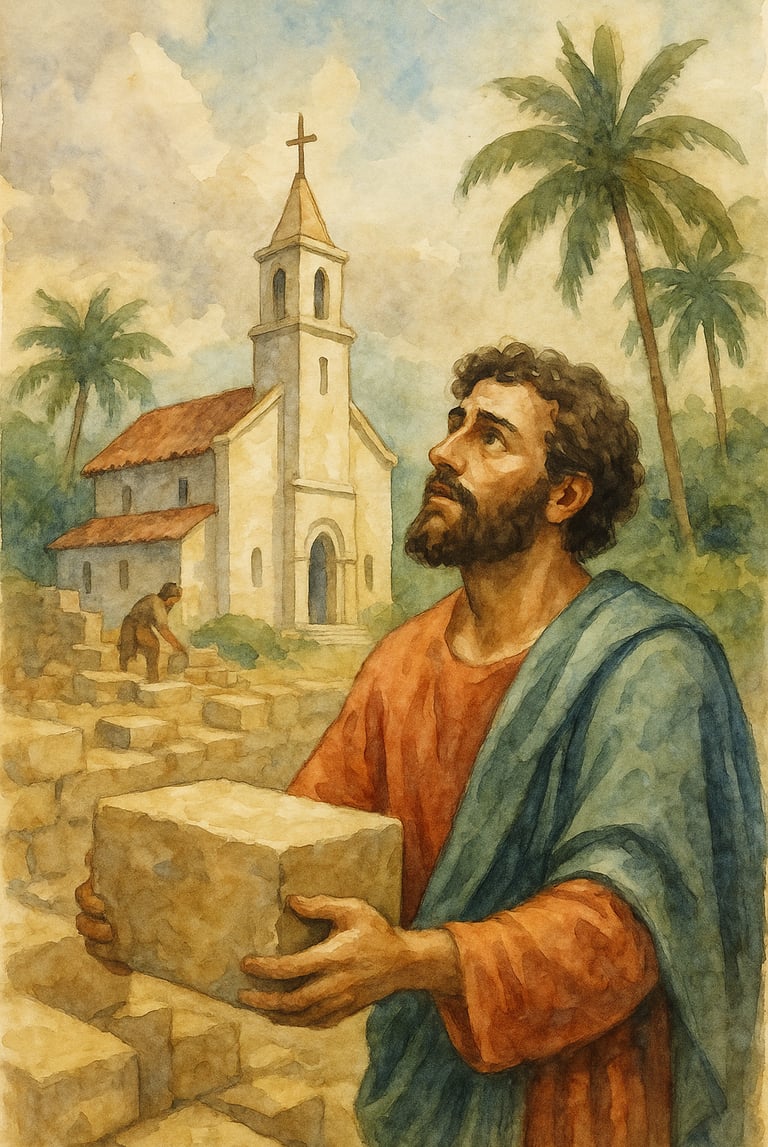St. Thomas the Apostle
Not My Kind of Saint—Until He Was
Halo & Light Studios
7/3/20253 min read


Click Link for a reel of Daily Dose of Saints and Faithful Art:
https://youtube.com/shorts/mxwo6Xb_q0s
I’ll be honest—St. Thomas was not my kind of saint.
He doubted. He hesitated. He didn’t follow Jesus to Calvary like the beloved disciple John. And after the Resurrection, while the others rejoiced, Thomas remained a stubborn unbeliever—until Jesus Himself came to confront and heal him.
Where was he that first Easter evening? Why wasn’t he with the other apostles?
Was he back at his trade—miserable, haunted by the memory of the Cross?
Was he staring at wood, thinking of crucifixion—heartbroken, confused, ashamed?
Did he question his purpose? Did he feel foolish for following a Messiah who died like a criminal?
Maybe he was bitter. Maybe he told himself: “Never again. I won’t be deceived. I won’t believe unless I see. Unless I touch.” A claim he repeated to his friends, "Unless I see in His hands the print of the nails, and place my finger in the mark of the nails, and place my hand in His side, I will not believe.” (John 20:25)
He demanded proof because his heart had been shattered by loss. His deep pain revealed the depth of his love for Christ. But his fingers would not be satisfied with stories—he longed to touch Truth Himself.
And so a week passed. Then—Jesus came. Through locked doors, into their fear and silence, He stood among them and said: “Peace be with you.” Imagine Thomas’s heart in that moment—pounding, stunned, undone.
And then Jesus turns—straight to him: “Put your finger here. See My hands. Reach out your hand and put it into My side. Stop doubting and believe.” (John 20:27)
Thomas, trembling, reaches forward. The Risen Lord—gentle, patient, and unshaken—guides his hand to His wounded side, the very place pierced by the Roman lance. Jesus knew that Thomas, despite his current doubts, would one day bear a similar wound for His name. Then—Thomas' soul bursts forth in one of the greatest confessions in all of Scripture: “My Lord and my God!” But Jesus continues: “Because you have seen Me, you have believed. Blessed are those who have not seen and yet have believed.” (John 20:29)
Just days earlier, Jesus had said to Mary Magdalene, “Do not touch Me.” But to Thomas—the one who doubted, the one who wandered—He offered His wounds freely. Christ didn’t shame him. He rescued him. He gave Thomas exactly what his wounded heart needed to believe again. And from that moment, Thomas was never the same.
With those same hands that had touched the side of Christ, Thomas would go on to consecrate bread into the living Body of Christ—making present the Body, Blood, Soul, and Divinity of Jesus at every Holy Mass. For Thomas, the Eucharist must have been a mystical return to that moment of mercy—when the Risen Lord restored him, not with wrath, but with love.
Tradition holds that Thomas traveled farther than any other Apostle, sailing to India around 52 A.D., where he preached the Gospel, performed miracles, and baptized thousands. He is credited with founding the Seven Churches of Malabar, the roots of today’s Syro-Malabar Catholic Church. He was martyred near present-day Chennai in 72 A.D., pierced by a spear—the very kind of wound he had once insisted on seeing. His death was a poetic echo of his doubt—now transfigured into faith. If he was ever a doubter, he ensured that history would remember his faith. His tomb remains a sacred site of Christian pilgrimage, and his legacy endures in the vibrant Indian Christian communities who still bear his name with honor.
Today, when the priest holds up the Sacred Host at Mass, and we gaze upon what appears to be bread, many of us whisper the same words: “My Lord and my God.” Those were Thomas’s words—the doubter turned missionary, the skeptic turned saint.
And after learning all of this, I’ve had to admit something: Maybe I didn’t like Thomas because… I am like him.
Skeptical. Prone to fear. Always searching for certainty. But the beauty of the Gospel is this: Christ meets even the doubting disciple—not with condemnation, but with compassion.
Today, St. Thomas is one of my favorite saints.
Because if Jesus could reach into Thomas’s fear and raise up a missionary-martyr from it…
He can do the same with me. And with you.
“Blessed are those who have not seen, and yet have believed.” —John 20:29
St. Thomas the Apostle, pray for us.


